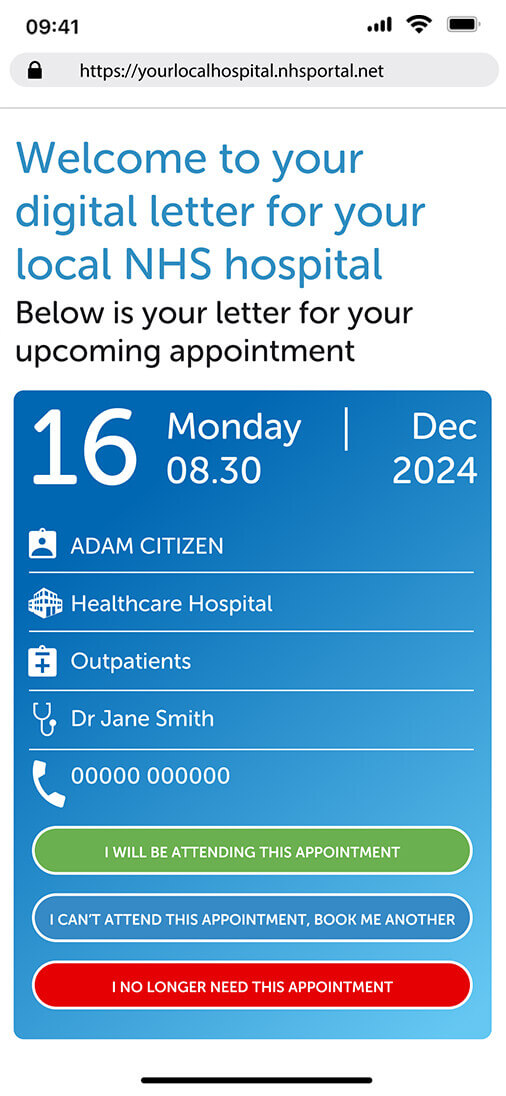

Reducing the ‘Did not Attend’ rate with digital patient letters.
0%
Drop in Did Not Attend (DNA) rate.
0%
Reduction in postal letter costs.
£0M
Potential income gains.
Postal letters are the main NHS communication channel for patient appointment details. However, in a recent survey 48% of respondents who had missed a medical appointment stated postal letter related issues, such as mail arriving too late or not at all, for their non-attendance.
United Lincolnshire Hospitals NHS Trust (ULHT) is one of the biggest acute Trusts in England, covering four hospitals and caring for a large rural community. The Trust went to tender to find a solution to improve patient engagement by capitalising on digital efficiencies in patient communications.
Challenge
Patients missing appointments due to lost or late mail.
Solution
Appointment letters are sent to patient smartphones.
Results
Drop from 5.8% to 4.1% in DNA rate.
59%
of patients choose digital communications over postal correspondence.

Patient behavior insights
With trackable communications, the Trust can now access patient behaviour analytics including open rates, essential reading clicks and which patient portal features are most used. This insight enables the Trust to tailor communications to increase read rates and provides a full audit trail.
36% patients aged 70-89 years accessed the portal, challenging the misconception that certain age groups do not engage digitally.
70% of 18-29 year olds chose digital letters over the postal version.
59% of patients choose digital communications over postal ones.

More healthcare resources.



